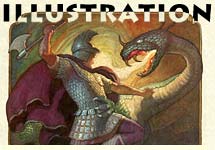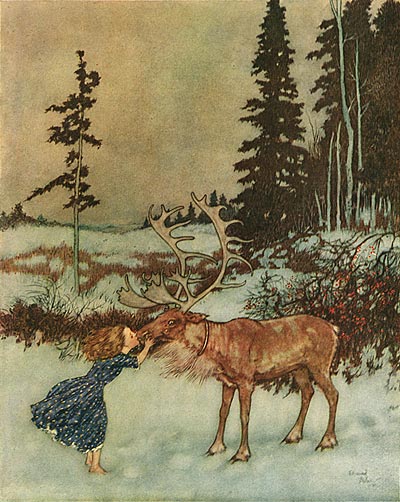
The invention of chromolithography at the end of the 19th century opened up a new world for book illustrators. It was no longer necessary for illustrators to limit the number of colors and focus on high contrast line work. The printing press was now capable of reproducing oil paintings and watercolors with all of the richness of the original artwork. This resulted in an explosion of illustrated books around the turn of the century, and made superstars of the artists who created them.
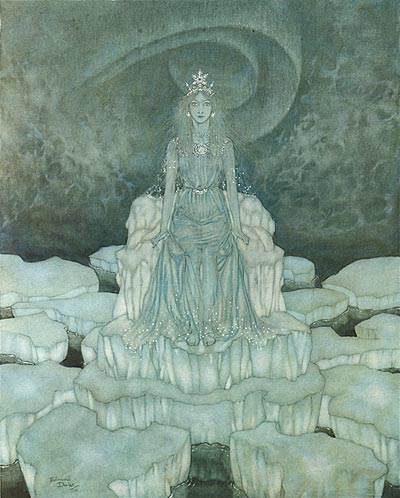
One of the most striking aspects of vintage book illustrations is the use of color. In our memory, our impression of these beautiful images is made up of rich and vibrant hues, but if we analyze the way color is actually being used, we realize that the color harmonies are very subtle, with small brilliant accents used to direct the eye, and careful attention to the rendering of form, texture and lighting effects.
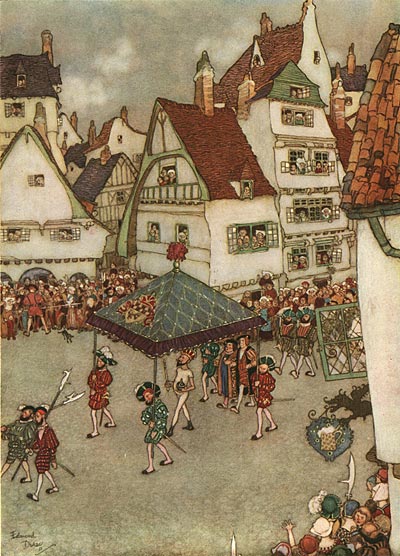
Art is all about beautiful contrasts, and so is the use of color… warm colors against cool colors, light ones against dark ones, large areas of color against small ones… Edmund Dulac was a master at juggling these contrasts to create a pleasing color scheme from a muted palette. Some of the pictures in today’s post are almost monochromatic, with a variety of shades and shapes defining the image. Others have a variety of hues all around the same value. Dulac is constantly varying the way he handles the lighting and color to convey the feeling of the story.
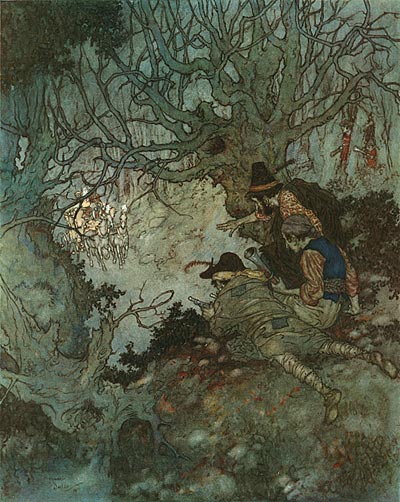
Collecting golden age illustrated children’s books can be a difficult and frustrating process. It’s hard to know just how many color plates a book should have. First editions might have had thirty or more color plates; but with each subsequent reprinting, the number might have been reduced to twenty, twelve, eight or four. Modern reissues might contain all of the plates, but the color balance and detail in the reproduction is usually nothing like the original. First editions are always the best, but they can be very costly, selling for as much as a thousand dollars or more for a volume in good condition. For the past twenty years, I’ve been collecting these books… on a budget. I look for damaged bindings or torn text pages that will reduce the value. As long as the illustrations are all present and in good condition, I don’t care how beat up the rest of the book is.
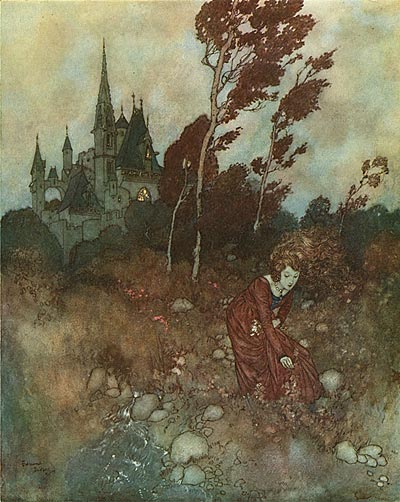
For a long time, I’ve been wanting to get ahold of an original printing of Edmund Dulac’s most famous book, Andersen’s Fairy Tales. However, the cost of first editions with all 28 plates was prohibitive. The other day I was searching through abebooks.com and with some clever search terms, I discovered that there was a German printing of Andersen’s Fairy Tales that contained all of the plates I was looking for. Since it was in German, the price was a fraction of what an English or American first edition would cost. Needless to say, I didn’t hesitate! Here are the scans…
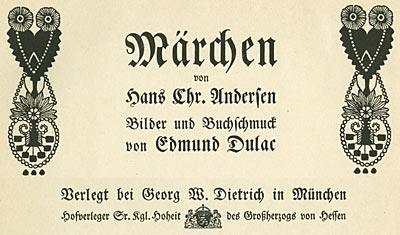
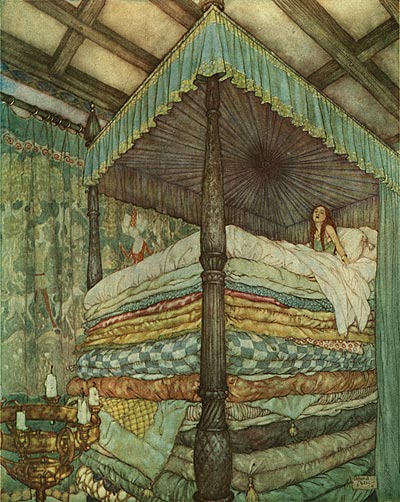
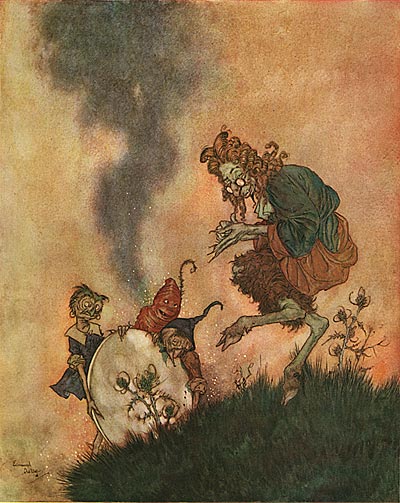
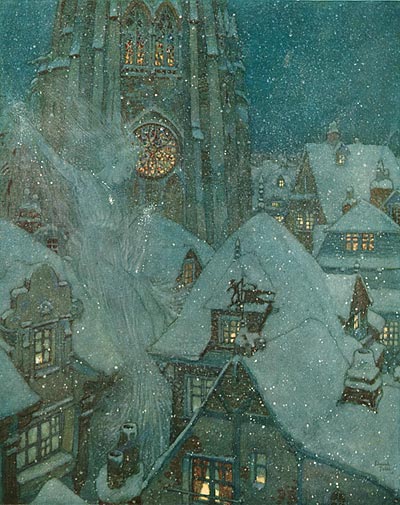
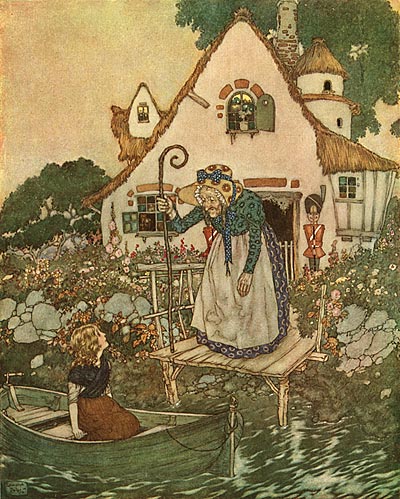
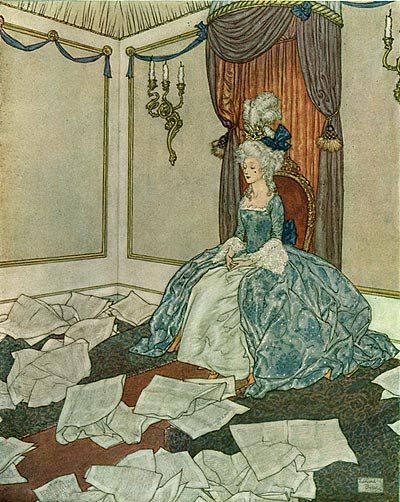
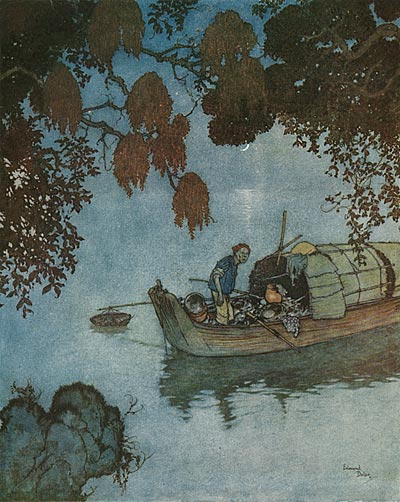
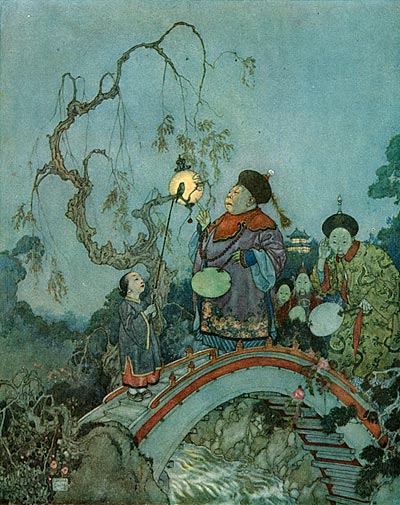
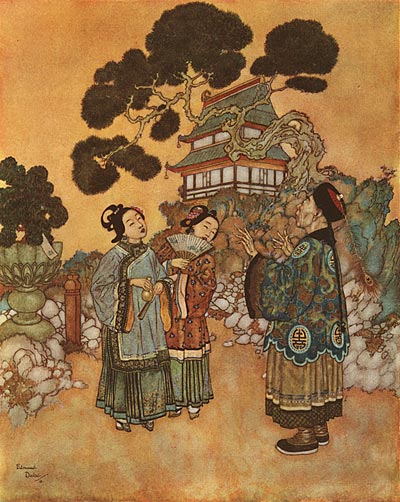
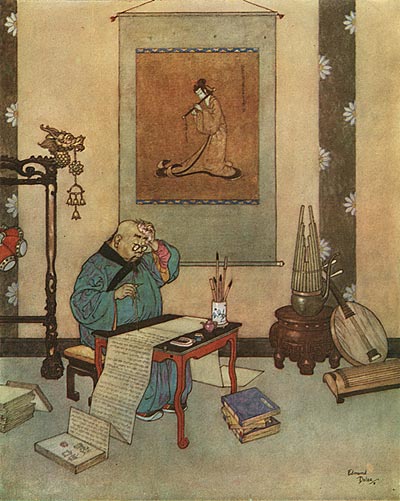
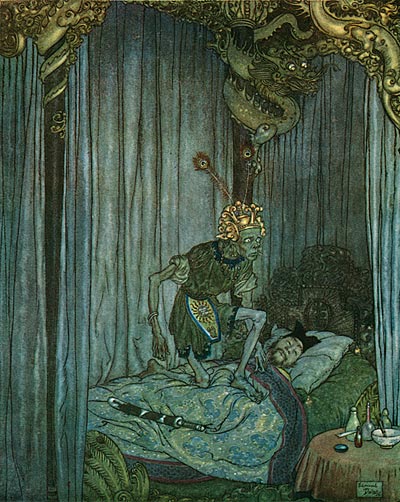
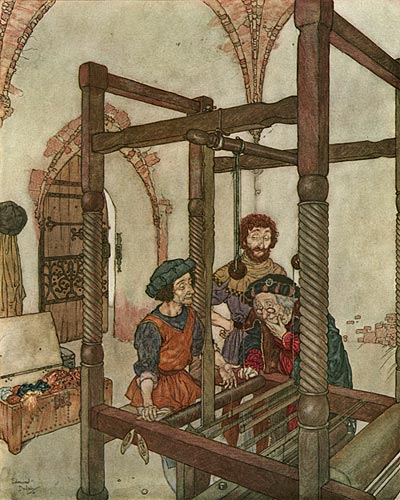
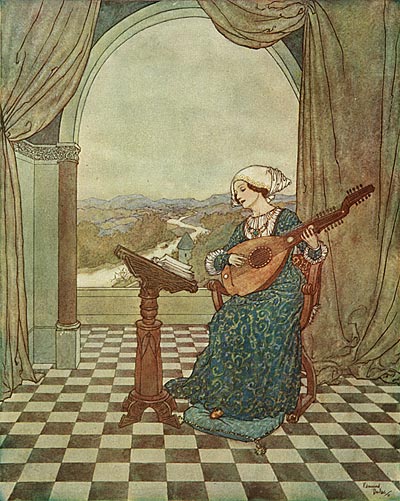
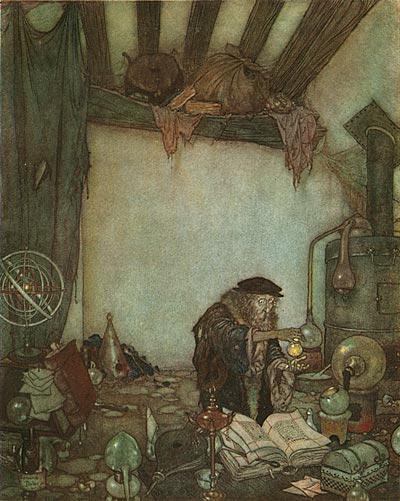
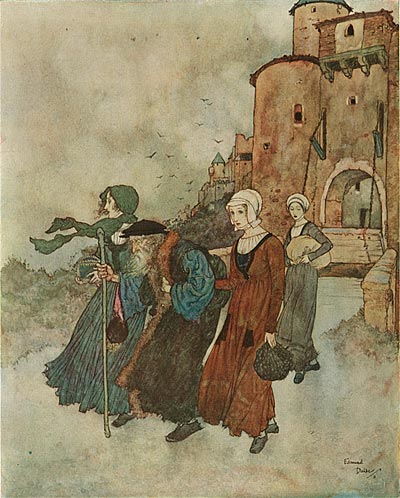
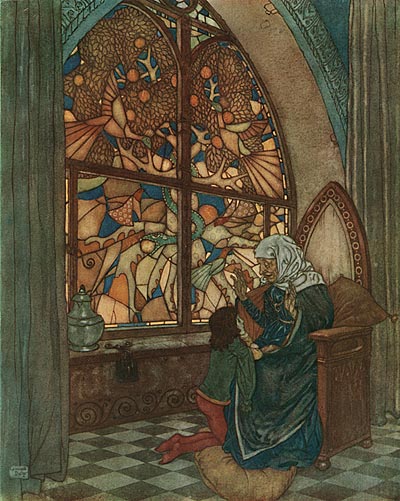
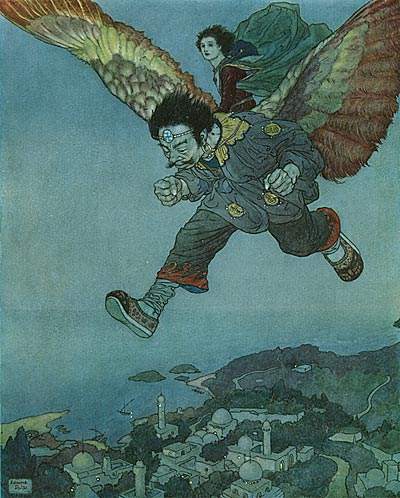
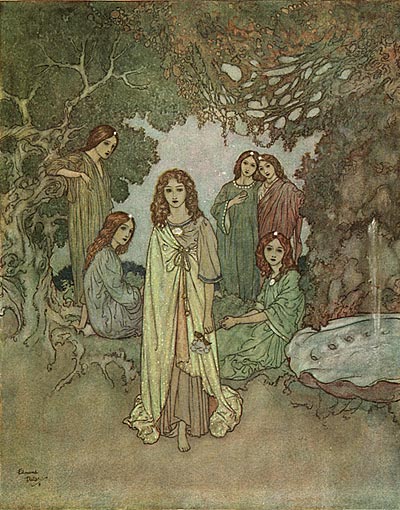
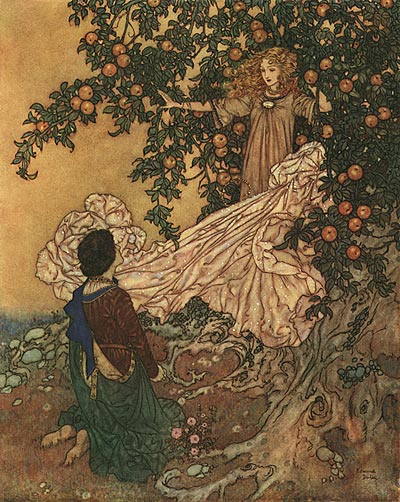
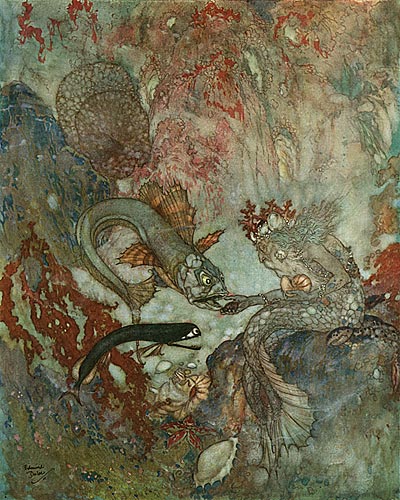
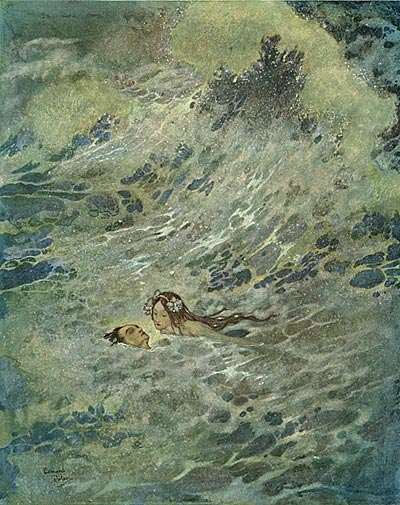
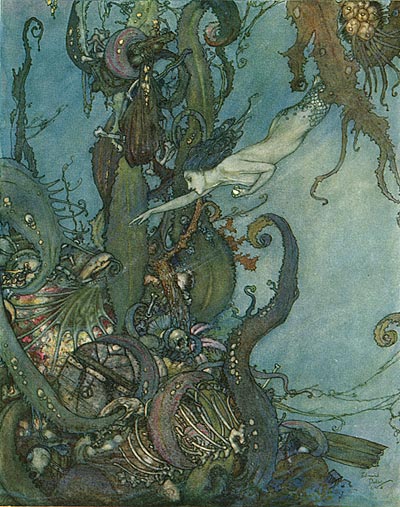
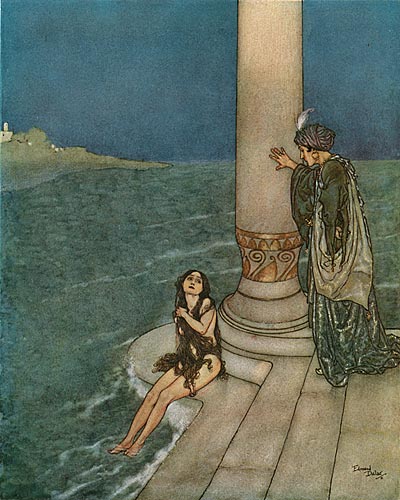
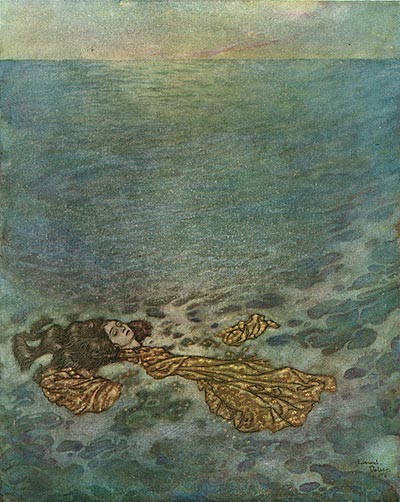
Stephen Worth
Director
Animation Resources
This posting is part of a series of articles comprising an online exhibit spotlighting Illustration.















